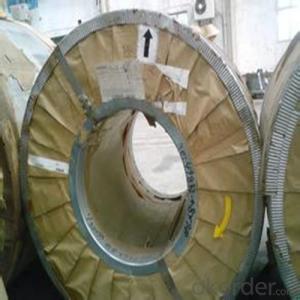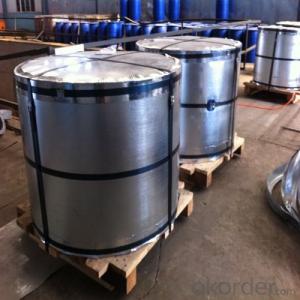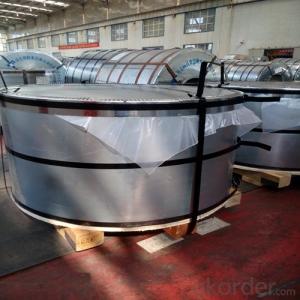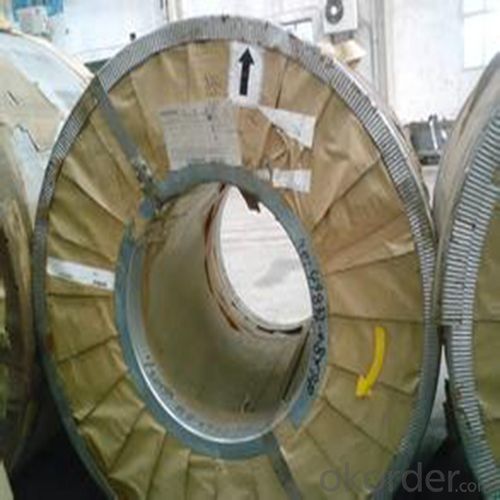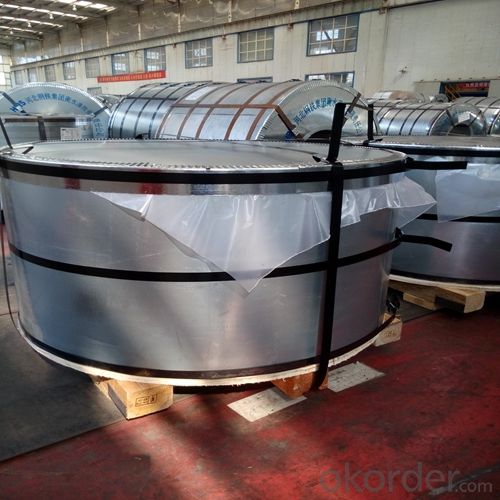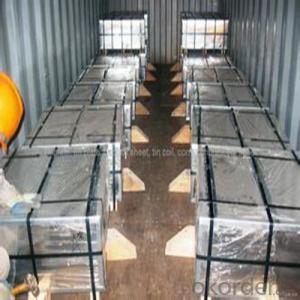Electrolytic Tinplate of Prime Quality for Chemical Cans Use 0.335mm Thickness
- Loading Port:
- Qingdao
- Payment Terms:
- TT OR LC
- Min Order Qty:
- 50 m.t.
- Supply Capability:
- 30000 m.t./month
OKorder Service Pledge
OKorder Financial Service
You Might Also Like
1.Structure of Electrolytic Tinplate of Prime Quality for Chemical Cans Use 0.335mm Thickness Description
Electrolytic Tinplate, is one thin steel sheet with a coating of tin applied by electrolytic deposition. Tinplate made by this process is essentially a sandwich in which the central core is strip steel. This core is cleaned in a pickling solution and then fed through tanks containing electrolyte, where tin is deposited on both sides. As the strip passes between high-frequency electric induction coils, it is heated so that the tin coating melts and flows to form a lustrous coat.
2.Main Features of the Electrolytic Tinplate of Prime Quality for Chemical Cans Use 0.335mm Thickness
Electrolytic Tinplate undoubtedly enjoys the pride of place as a packaging medium especially for food. It owes its unique position to its "nine layer sandwich structure", each of which contributes to its eminence as a packing material. The steel base of electrolytic tinplate provides the necessary strength and formability for can fabrication. The tin-iron alloy layer provides the bond between the steel and free tin layer. The free tin layer is not only responsible for the attractive bright finish and ease of solderability but is also non-toxic- a factor of vital importance in food packaging!
Tinplate is also widely used for making all types of containers such as food cans, beverage cans, and artistic cans, tea cans, painting cans, chemical package cans and dry food package cans, metal printing etc. Its applications are not limited to containers; recently, electrolytic tinplate has also been used for making electrical machinery parts and many other products.
.
3. Electrolytic Tinplate of Prime Quality for Chemical Cans Use 0.335mm Thickness Images
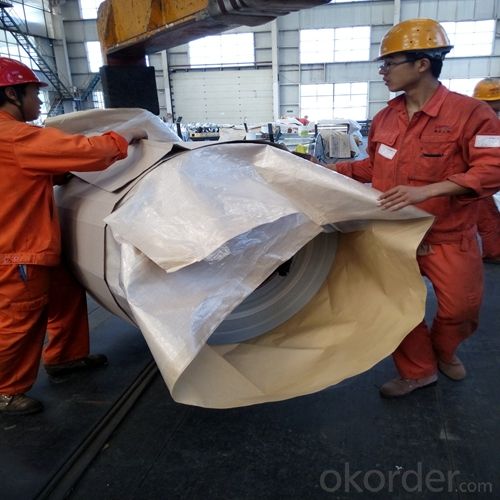
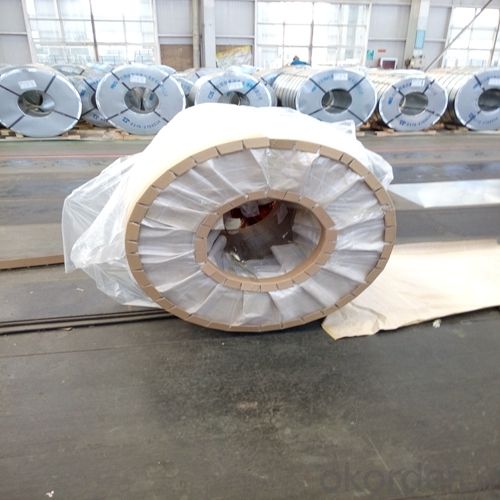
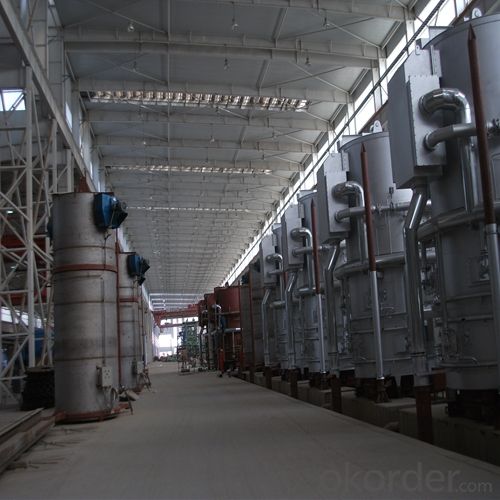
4.Electrolytic Tinplate of Prime Quality for Chemical Cans Use 0.335mm Thickness Specification
Standard: ISO 11949 -1995
Material: MR
Thickness:0.335mm
Width: 600mm
Temper: T3
Annealing: BA
Coil Inner Diameter: 508mm
Weight: 6-10 tons/coil 1~1.7 tons/sheets bundle
Passivation:311
Oil: DOS
Surface: Finish
5.FAQ of Electrolytic Tinplate of Prime Quality for Chemical Cans Use 0.335mm Thickness
- How are the tinplates specified?
The tinplates are specified as per the steel base, extent of tempering, the coating weight, annealing method and the surface finish.
- How many types there are for base steels?
The base steels are of three types: Type MR, L, D
- Q: How does tinplate contribute to the safety and integrity of packaged products?
- Tinplate contributes to the safety and integrity of packaged products through its excellent protective properties. The tin coating on the steel substrate acts as a barrier, preventing direct contact between the packaged product and the metal surface. This barrier helps to prevent corrosion, oxidation, and contamination of the product. Additionally, tinplate offers high strength and durability, ensuring that the package remains intact during handling and transportation, thereby safeguarding the contents from potential damage or spoilage.
- Q: What are the environmental impacts of tinplate production?
- The environmental impacts of tinplate production include the extraction and processing of raw materials, such as iron and tin ores, which can lead to deforestation, habitat destruction, and soil erosion. The manufacturing process involves energy-intensive operations, emitting greenhouse gases and contributing to climate change. Additionally, the production of tinplate requires the use of chemicals, such as sulfuric acid and tin chloride, which can contaminate water sources and harm ecosystems. The disposal of waste and by-products, including sludge and wastewater, also poses a risk to the environment if not properly managed.
- Q: Is tinplate resistant to corrosion?
- Yes, tinplate is highly resistant to corrosion due to the protective layer of tin that is electroplated onto the surface of the steel.
- Q: Tin cans and tin cans, which is good?
- I think this question is not asked to tin tin, chrome tin and galvanized tin which is the best? Of course, the best is galvanized iron. The second is the tin tin, followed by chrome tin, iron box is made finally.
- Q: How is tinplate affected by different types of beverages?
- Tinplate is generally resistant to most types of beverages, including acidic ones. However, certain highly acidic or corrosive beverages, such as fruit juices, can cause a chemical reaction with the tin coating, potentially leading to a metallic taste or discoloration. To prevent this, tinplate cans are often lined with a protective coating, such as lacquer or polymer, to ensure the beverage's quality and safety.
- Q: How does tinplate perform in terms of puncture resistance?
- Tinplate performs exceptionally well in terms of puncture resistance. Its unique combination of strength and durability makes it highly resistant to punctures, making it an ideal material for packaging delicate or sharp objects that require protection.
- Q: What are the main factors affecting tinplate coil surface quality?
- The main factors affecting tinplate coil surface quality include the quality of the raw materials used, the manufacturing process, the level of cleanliness and maintenance in the production environment, the handling and storage conditions, and the presence of any external contaminants or defects.
- Q: What is the recycling process for tinplate?
- The recycling process for tinplate typically involves several steps. First, the tinplate is collected and sorted at recycling centers or facilities. It is then shredded into small pieces, allowing for easier processing. The shredded tinplate is then subjected to a magnet, which separates the tin-coated steel from any non-ferrous materials. The separated tinplate is melted down in a furnace, and impurities are removed through various processes. The molten tinplate is then cast into ingots or rolled into sheets, which can be used to manufacture new tinplate products. This recycling process helps conserve resources, reduce waste, and minimize the environmental impact of tinplate production.
- Q: What are the disadvantages of using tinplate in packaging?
- One of the disadvantages of using tinplate in packaging is its susceptibility to corrosion. Tinplate can rust when exposed to moisture and other corrosive elements, which can compromise the integrity of the packaging and potentially contaminate the product. Additionally, tinplate is relatively heavy compared to other packaging materials, which can increase transportation costs and carbon footprint. Lastly, tinplate is not as malleable as other materials, limiting its versatility in certain packaging designs.
- Q: What are the different ways tinplate packaging can be decorated?
- Tinplate packaging can be decorated in various ways including printing, embossing, debossing, hot stamping, and applying labels or decals. These methods allow for customization and branding, making the packaging visually appealing and attractive to consumers.
Send your message to us
Electrolytic Tinplate of Prime Quality for Chemical Cans Use 0.335mm Thickness
- Loading Port:
- Qingdao
- Payment Terms:
- TT OR LC
- Min Order Qty:
- 50 m.t.
- Supply Capability:
- 30000 m.t./month
OKorder Service Pledge
OKorder Financial Service
Similar products
Hot products
Hot Searches
Related keywords
